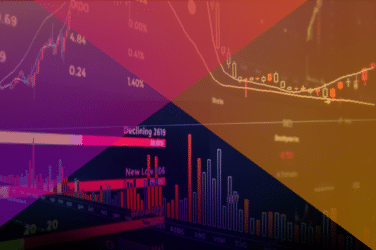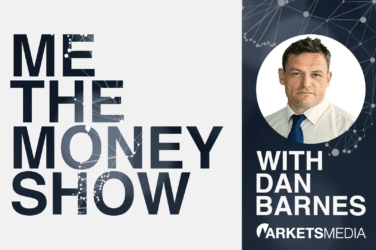It’s been a long coming: real-time dark pool reporting.
And the equities market and regulators are still waiting.
Sigh.
While sounding good at the outset and gaining populist support, real-time reporting and use of identifiers when trading in dark pools is still in the offing and spooks industry – even eight years later. The buy-side, as much as it wants increased market transparency, still wants anonymity when it trades off board so as to hide its trading strategies and intentions. And the sell-side, looking to cater to those needs, walks a delicate balance between the buy-side’s requests and regulators clamoring for more oversight and information.
Hence, the concept of more real-time or near real-time reporting and trade identifiers was borne. And as of this writing, somewhat stillborn. Trade identifiers are still not in widespread use. Currently, FINRA reports dark pool trading on a delayed two-week basis, making market oversight possible but not immediate. And the markets seem to be OK with that compromise – until the next market meltdown or crisis.
Don Ross, Chief Executive Officer at PDQ Enterprises, operator of CODA Markets, looked back eight years ago and reflected on today’s Flashback Friday story:

Don Ross, CODA Markets
“When I read that article again, (see below) eight years later, there’s still a lot in it that everyone would agree with,” Ross began. “Dave Johnson’s comment on the buy-side having reservations about symbol-specific, real-time reporting is still 100 percent correct, as even T+1 reporting gets push-back.”
Ultimately, Ross added, what institutional investors want will never change.
“They want trade data to show them bigger picture liquidity trends, but not provide meaningful information to HFT traders who they fear are gaming the system,” Ross said. “This is something CODA Markets is dealing with through the launch of CODA Block, our new 30-second auction facility, which we geared to the liquidity and leakage concerns of institutions.”
He explained that while CODA Block’s on-demand auctions are a new market structure, the idea of auctions for liquidity discovery is hundreds of years old, and is without question the best way to address institutional investor concerns. With a symbol-only auction, only the initiator knows size or side. If the initiator doesn’t get what they want in response to the symbol, no trade is made, and the market knows nothing about their intentions, allowing them to try again later without the market having moved. And if the initiator can make the trade, the complete trade is done in one print, eliminating the opportunity for HFT’s to gain an edge in between smaller prints.
Joe Saluzzi, partner at Themis Trading in New Jersey told Traders Magazine recently that he and his firm are in favor of adding a unique identifier for dark pool trades since the added post-trade transparency could help with the sourcing of liquidity.
“Many ATS’s already advertise the trades that occur on their systems so standardizing this process would add a new level of market transparency,” Saluzzi said.
He added that since the SEC’s 2009 Regulation of Non–Public Trading Interest proposal, the SEC has brought numerous actions against dark pools including fines for Barclays, Credit Suisse, ITG and UBS. Many of these actions were initiated by whistle blowers but if regulators had access to a post-trade ATS identifier, it’s possible that they may have been able to discover these and other infractions sooner.
Spencer Mindlin at Aite Group noted that every trade must be reported to the consolidated tape, regardless of where it was transacted and the trade details on that report are relatively innocuous. And since ATS’s are not allowed to print directly to the tape, they report to the TRF. But dark pools and internalizers both report to the TRF, so participants don’t really know what occurred or where and by whom.
“But more generally, I think given the challenges institutions have with sourcing liquidity cost-effectively for hard to trade stocks like small- and mid-caps among a complex and fragmented market structure, I think regulators need to be very careful when considering the mandate of additional transparency that could make it harder for the institutions that rely on dark pools, Mindlin said. “If liquidity dries up in dark pools because of additional transparency, the liquidity is unlikely to relocate to lit exchanges, which means overall transaction costs might rise.”
When it comes to general reporting by dark pools, Mindlin said the market is at the point where most dark pools are reporting trades to the trade reporting facility fairly quickly, typically within a minute or so after the execution – fairly quick. Thus, it’s certainly fast enough so that people who are trying to get a sense of intra-day volume can look at the tape and understand what’s going on. And in modern trading terms, a one-minute delay is pretty delayed considering how quickly participants and how their computers are programmed to process real-time market data information and react. By the time a dark pool reports a trade to the tape a minute later, that information is of little use to anyone to profit from it.
But will dark pools ever report on a real-time basis?
“I do not think so,” Mindlin said. “Because if the regulators did mandate real-time reporting from dark-pools, I think it would quickly eliminate much of the value proposition offered by many of them. Real-time reporting from dark pools doesn’t seem to make a lot of sense. Institutions are using dark pools to protect orders from information leakage and preserve anonymity. And any additional trade disclosures in dark pools like this would likely cause shifts in liquidity away from dark pools – effectively picking winners and losers by regulators — for which I don’t think there’s much appetite for right now. All things equal, I think real-time reporting would only offer incremental value to participants looking to trade off that additional information and subject dark pools and their participants to what they would deem to be toxic order flow.”
The following article originally appeared in the January 2010 edition of Traders Magazine
SEC Proposal: Real-Time Dark Pool Reporting Spooks Industry
By Nina Mehta
Sellside and buyside firms are worried that the Securities and Exchange Commission’s proposed plan for dark pool reporting could hurt institutional investors by enabling others to game their flow. The SEC late last month proposed that each dark pool identify its prints in real time.
“There’s significant reservation from the buyside about symbol-specific real-time reporting,” said Dave Johnsen, head of equities business development at Goldman Sachs Electronic Trading. “It’s not welcomed by long-term investors.” Goldman operates the Sigma X dark pool, the industry’s second-largest.
As part of the SEC’s “Regulation of Non-Public Trading Interest” proposal, issued in mid-November, trades done in dark pools would have to be attributed in real time to the dark pool where they occurred. All dark pool trades already print to the consolidated tape in real time, but are identified simply as over-the-counter trades.
The SEC proposal would reword the language of the Consolidated Tape Association Plan to require that all last-sale prices collected by FINRA include an identifier unique to the ATS.
Under this proposal, all dark pools would have to identify their trades, unless those trades have a market value of at least $200,000. The SEC recommended this exception to its proposed post-trade reporting rule to avoid hurting institutions working big orders.
“Our clients have said that it could introduce potential inconvenience without material benefit,” Johnsen said. In his view, certain high-frequency trading shops could benefit more from that information than traditional buyside firms, since the former tend to be more reliant on market data to fuel their strategies. “It could empower that segment of the market more than longer-term investors,” Johnsen said.
Morgan Stanley also thinks real-time attribution would affect the ability of institutions to trade quietly in dark pools. “Real-time attribution to a dark pool would impact volume in dark pools,” said Andrew Silverman, global co-head of electronic trading at the broker-dealer. “Long-onlies would be less likely to put orders into dark pools,” because of information leakage concerns. Morgan Stanley operates two dark pools.
Silverman said he would not mind if dark pool trades are identified as TRF.D dark pool prints in real time. In his view, that would preserve intraday anonymity and give customers some knowledge about whether a trade took place in an ATS or at an upstairs desk.
A recent TABB Group report discussed the buyside’s view of real-time dark pool attribution of trades. The report was based on interviews with 66 institutions.
Institutions, the report said, use dark pools “to protect institutional orders from adverse price movement caused by overexposure in lit markets.” Interviews were conducted before the SEC proposed rule changes for dark pools, but the issues were already being discussed in the industry.
The report noted that 18 percent of firms thought some form of dark pool reporting would improve market transparency, although the nature and timing of that reporting would be critical.
According to the report, buyside traders think that “any trade reporting that would identify the specific dark pool should be late enough in time so as to be of little value to the fast-money players.” The report noted that “post-market close reporting could offer institutional traders insight as to how liquidity is shifting in certain market names or market centers, while offering little opportunity for gamesmanship.”
Kevin Cronin, global head of equity trading at mutual fund giant Invesco, thinks real-time information about where dark pool prints take place would harm institutions. Identifying the source of dark pool prints will benefit high-frequency traders, he said in an Investment Company Institute Web seminar last month. “That absolutely is not good from an institutional perspective,” he said.
Whit Conary, CEO of Level ATS, a dark pool operated by a consortium of five broker-dealers, noted that the SEC’s current post-trade reporting proposal, if adopted, could accomplish “the opposite” of the regulator’s goals. “As more blocks are traded in algorithms, there is the potential for more information leakage with real-time, venue-specific reporting of smaller trades,” he said. “People can see the small trades and try to figure out whether there’s an aggressive buyer or seller in a particular venue.” Conary thinks the SEC should allow buyside firms to opt out of having their orders attributed to the dark pool that executed the trade.
An alternative to real-time attribution of dark pool prints that appears to be gathering industry support is end-of-day reporting of symbol-specific information. Morgan Stanley’s Silverman advocates this position.
Silverman suggested that “fuller granularity” at the end of the day about where trades occurred would be his preferance. “Reporting by each dark pool in the aggregate or by symbol at the end of the day would be okay,” he said. “But identifying the actual dark pool in real time could harm investors by signaling predatory traders who are reading the tape.”
Goldman’s Johnsen agreed, saying that symbol-specific reporting from dark pools with end-of-day or end-of-week data would be better than real-time data.





